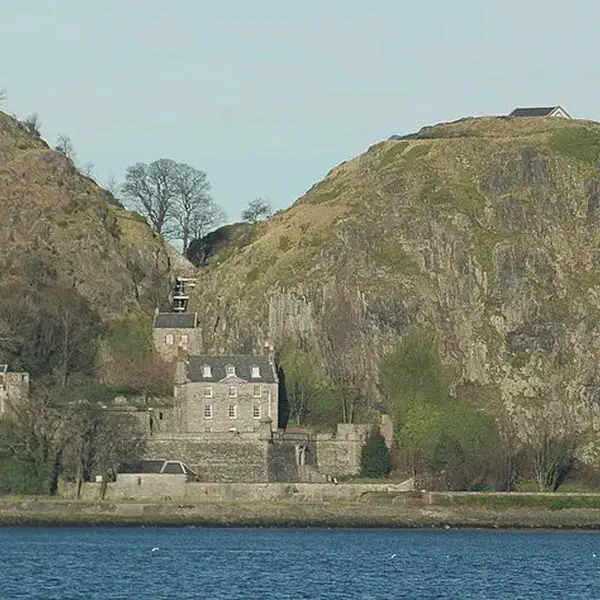
Dumbarton Castle, Under Siege Since January 1570, Captured by Captain Thomas Crawford
April 01, 1571
Dumbarton Castle has the longest recorded history of any stronghold in Scotland. It sits on a volcanic plug of basalt known as Dumbarton Rock which is 240 feet (73 m) high and overlooks the Scottish town of Dumbarton.
Mary, Queen of Scots stayed at Dumbarton Castle in July 1563. After the defeat at the Battle of Langside in 1568 she tried to reach the Castle, but went instead to England. John Fleming, 5th Lord Fleming, keeper of the Castle went with her into England and was allowed to return. When William Kirkcaldy of Grange governor of Edinburgh Castle changed sides to support Mary, this became a problem for Regent Moray. The subsequent conflict is known as the Marian Civil War.
The first siege of Dumbarton was lifted because of the assassination of Regent Moray in January 1570. The assassin James Hamilton of Bothwellhaugh was welcomed at Dumbarton. Fleming’s defence of Dumbarton for Mary was staunch, assisted by the timely arrival of supply ships from France under the command of his cousin, Thomas Fleming. Lord Fleming’s attempt to ambush the English general William Drury in May 1570 failed and was satirized in a ballad printed by Robert Lekprevik in May that year and attributed to Robert Sempill; The tressoun of Dumbertane.
In October 1570 during the Marian civil war Fleming fortified the castle for Mary against the supporters of James VI of Scotland with stones obtained by demolishing churches and houses in Dumbarton and Cardross.
The castle was captured by the forces of Regent Lennox led by Thomas Crawford of Jordanhill and John Cunningham of Drumquhassle in the early hours of 2 April 1571, who used ladders to scale the rock and surprise the garrison.
Lord Fleming escaped by sea but died a year later when accidentally wounded by friendly fire as he supervised the supply of additional munitions at Edinburgh Castle.